Errors of Samsung air conditioners: how to detect a malfunction in the code and troubleshoot
Air conditioning systems from the Korean manufacturer are quite reliable devices, but sometimes difficulties arise in their work. In order to protect the equipment from serious damage and to help diagnose problems correctly, all errors of Samsung air conditioners are displayed.
The split system informs the user about their problems using special alphanumeric codes or by flashing LED indicators in a specific sequence. In order to understand what kind of failure occurred, you need to know what this or that code means.
We will tell you what errors can occur in the climate technology of this popular brand and what combinations of letters and numbers will appear on the display of the device.
The content of the article:
Error Reporting Principle
To increase the reliability of the device and prevent serious damage, Samsung air conditioners are equipped with a self-diagnosis system, which continuously checks several parameters of the device.
In the event that at least one of the specified parameters is out of norm, the device reports this in two ways:
- On the display of the indoor unit, a combination of the letter E and three digits, for example, E101;
- On the LED display of the outdoor unit, by glowing yellow, green and red diodes in various combinations.
The indoor units of some models of air conditioners are not equipped with a display. They report their problems in the same way as outdoor units by flashing buttons of different colors.
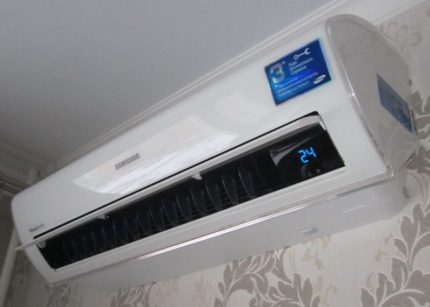
Below we will talk about the codes displayed by Samsung air conditioners in case of a malfunction on the display or indicator board. Knowing the decryption of these alphanumeric combinations will allow you to understand what problems have occurred in the split system.
Where to start troubleshooting?
Modern air conditioners are intelligent electronic devices that are controlled by an integrated processor. It is he who analyzes the information received from many sensors, recognizes malfunctions and displays their codes.
Errors that occur are one-time, for example, voltage surges in the network, and there are long-term, for example, shorting of the fan windings. In order to understand the nature of the malfunction, the first thing to do is restart the power supply. He will reboot the air conditioning control system and reset the signals from the sensors.

To restart, you must disconnect the device from the network for 30 seconds and then reconnect. If the error was one-time, then its code will disappear from the screen or indicators and the device will start working again. If the malfunction is serious, then the error will be displayed again and it will be necessary to eliminate its root cause.
Digital codes on the indoor unit
Displaying the error code on the display of the indoor unit is the most convenient way to bring information to the owner of the air conditioner.
The display consists of two discharges and has the form 88. In the instruction manual, it is also called the “88 display”. At the same time, such a display can show only one letter and one digit, or two digits. At the same time, error codes always consist of one letter E and three digits.
The display shows the coded combination in two stages: the first and second part of the code are displayed alternately. For example, sequentially luminous values of E1 and 21 mean error E121.
If the letter E and numbers appear on the display, you just need to find a decryption of this value. Samsung air conditioners use more than 30 error codes on 88 displays.
E101 - the outdoor unit does not respond to the indoor unit for more than 1 minute (no connection). It is necessary to check the correct connection of power and control cables between the units, as well as the absence of a short circuit between their conductors. This can be done by visual inspection and using a multimeter.
E121 - an error in the operation of the room temperature sensor. It is necessary to check the terminal connection of the sensor with the board. If the contact is normal, a sensor test will be required. For this, it is necessary to measure its resistance with a multimeter: at a temperature of 25aboutWith it should be 10 ± 3% kOhm. In case of non-compliance, the sensor must be replaced.
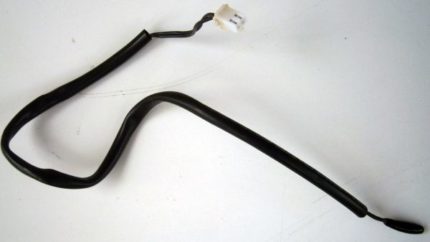
E122, E123 - error of the temperature sensor, which monitors the temperature of the heat exchanger of the indoor unit. It is checked and fixed in the same way as error E121.
E154 - malfunctions in the internal fan motor. Check the terminal block for contact with the board. Make sure nothing interferes with the rotation of the fan.
E162, E163 - Error making settings in the air conditioner memory. The problem is fixed in several ways, depending on the severity of the violation. First unplug the air conditioner from the power outlet for 30 seconds, then turn it back on and press the ON button. If this does not help, then you must reconfigure the device.
E186 - MPI error. For service, contact a service center.
E202 - communication between blocks is broken. Check integrity air conditioning tracks and cables connecting the blocks, reliability of contact in terminal blocks.
E221 - problems are reported by the air temperature sensor installed in the outdoor unit: open circuit or short circuit. Check connector, wire and sensor.
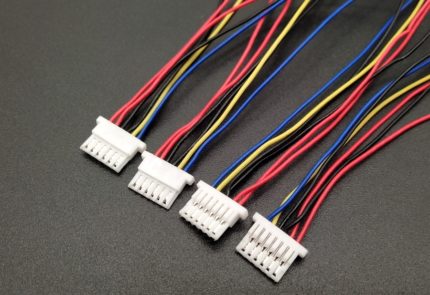
E237 - the coil temperature sensor of the outdoor unit has tripped. Allow the device to cool and restart power.
E251 - the discharge temperature of the compressor is not monitored: open or shorted sensor. A check is required on the sensor and its circuit.
E416 - protective shutdown of the compressor according to the air discharge temperature. Turn off the air conditioner and allow the outdoor unit to cool.
E422 - refrigerant movement blocked. Make sure that the service valve is open and there are no blockages in the pipes connecting the indoor unit to the outdoor unit. Make sure there is no leak.
E440 - prohibition of the operation of heating at an outdoor temperature above the value set in the device passport. Do not use the heating function until the outside temperature falls within the permissible limits. This is not a breakdown, but a protective function.
E441 - prohibition of the operation of the cooling system at an ambient temperature lower than that set in the manual. The device is working properly, but do not turn on cooling until the outdoor temperature rises to the level allowed by the manufacturer.
E458 - reports problems in the operation of the outdoor fan. Check fan connector. Measure with a multimeter whether voltage is supplied to the fan. Check the wires between the blocks and their connectors.
E461 - the compressor does not start. It is necessary to check whether voltage is supplied to the compressor and whether its windings are working.
E462, E484 - excess of the permissible current of the outdoor unit. Disconnect the power from the mains and turn it on again after 30 seconds. Check that both units are installed correctly, make sure that there are no obstacles to the air flow to the fans and air exhaust from them.
Check the integrity and wiring between the units. Check if the compressor service valve is fully open. If these measures do not help, then most likely you will need to replace the compressor. Contact the service.
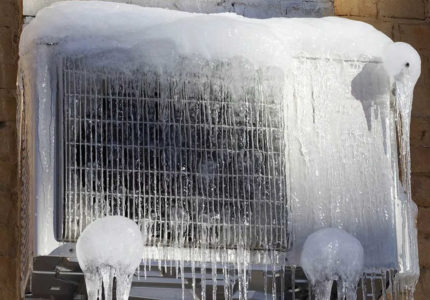
E464 - excess of the permissible current of the power module. Disconnect the device from the network for 30 seconds and turn it on again. Check the integrity and connection of all wires to the fans and compressor. Make sure that nothing interferes with the rotation of the fans of both units and the movement of air through them.
Check that the refrigerant pipes are correctly installed between the units. Open the compressor service valve fully. Measure the voltage at the compressor, as well as the resistance of its windings to an open and to the housing. Inspect the compressor: if there are any malfunctions on it and whether it emits extraneous noise.
E465 - error (overload) of the compressor. Check compressor as with error E464. If the compressor is OK, the inverter may need to be replaced.
E466 - voltage deviation in excess of permissible limits. Check the voltage level, the integrity of the wires and the reliability of the connections in the supply network, the correct connection of the supply cable to the air conditioner. Ensure fuses in the device are intact.
E467 - compressor operation error. Restart power to the air conditioner. Check compressor wire and connector. Listen to whether in compressor operation extraneous sounds. Measure the resistance of the compressor windings for an open and a short to the housing: in case of a malfunction, replace the compressor.
E468 - the current sensor has tripped. Restart power.
E469 - error of the DC voltage sensor of the inverter reactor. Contact a service center that has factory-certified repairmen.
E471 - OTP error. With this code, you need to contact the service.
E472 - problems with the AC line. Try restarting the power, if it does not help, contact a specialist.
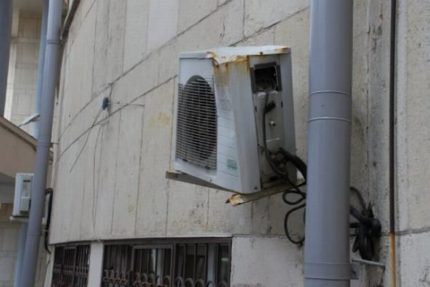
E473 - a compressor lock has occurred.
E554 - depressurization and refrigerant leak occurred. Restart power off for 30 seconds. If the problem persists, then check that the EWA sensor is installed, connected, and that the service valve is open.
The cause of the error may be improper installation of the air conditioning elements, as well as connecting pipes between them or damage to the elements along which the refrigerant moves. If it is detected that a leak has occurred through the defective part, it must be replaced and the device refilled.
E556 - error in the throughput of the tubes with the refrigerant.
If all the numbers and bulbs on the panel blink at the same time, this is an error in the air conditioner settings. It is necessary to perform the same actions as with codes E162, E163.
LED indication on the street device
The outdoor unit is equipped with its own error indication, which is designed to simplify the task of diagnosis and repair. Indication is made using a panel consisting of yellow, green and red LEDs. Each diode has three states: off, on and blinking. Various light combinations indicate certain errors.
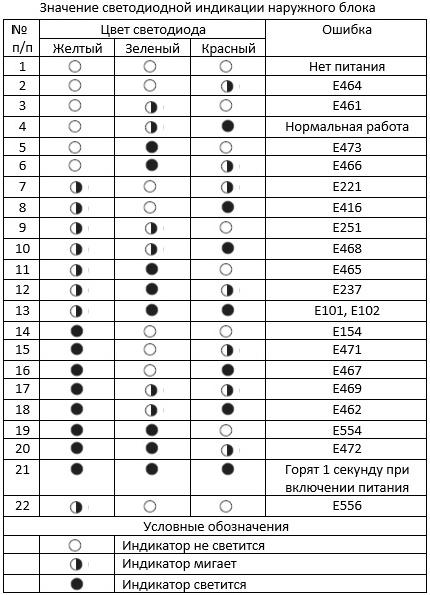
Most of these errors correspond to codes on the 88 display and duplicate its readings. However, there are codes that are displayed only on the LED display.
Smart Install Auto Check Mode
In the latest series of its “AR” air conditioners, Samsung has introduced a mode of automatic analysis of the correct installation Smart Install. Its purpose is to diagnose the health of all systems before the first use.
Such a function will be useful if you are installing the equipment yourself or want to check whether a specialized organization has installed the air conditioner correctly.
To start Smart Install, the air conditioner must be put into “standby” mode, and on the remote control for 4 seconds hold down the [Set / Cancel or Cancel], [Mode], [Power] keys. After starting the test mode, you will not be able to use the control panel.
Automatic verification takes 7-13 minutes. Progress is displayed on the 88 display with values from 0 to 99, and on the LED display in sequence, and then the LEDs blink simultaneously. In case of a positive test result, the air conditioner will inform you with a sound signal, the control panel will start working again.
If the check reveals errors, then their code will be indicated on the display or LED display.
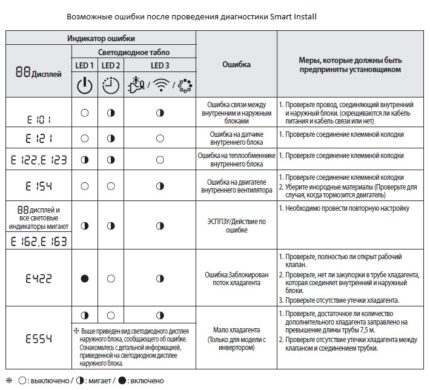
Knowing the error code, fix the identified problems yourself or contact the service center.
Self-Service Safety Precautions
Air conditioning is a technically sophisticated household appliance, the warranty of which applies only in the case of installation and maintenance by organizations specializing in the repair of household appliances. It is better to entrust the work to them.
In addition, outdoor unit installation often associated with increased danger when working at heights and often requires the use of safety equipment for high-altitude repairs or equipment with a working platform moving along in height.

If you decide to carry out the work yourself, then follow the necessary safety measures:
- Read the instructions in detail;
- During the maintenance and repair of the air conditioner, disconnect it from the power supply;
- If repairs require measurements on a device connected to the network, then use a serviceable tool with protective electrical insulation, do not touch live parts and rotating parts;
- Do not make changes to the operation scheme of the device, do not replace the protective sensors with “plugs”;
- Observe safety measures when working at height.
In domestic conditions, it is not always possible to identify all malfunctions and even more so to eliminate them.
Nevertheless, if you have certain skills, it is quite realistic to check the correct connection and the integrity of the wires. You can test the presence of contact in the connectors and clamps, the serviceability of temperature sensors, clean and other work.
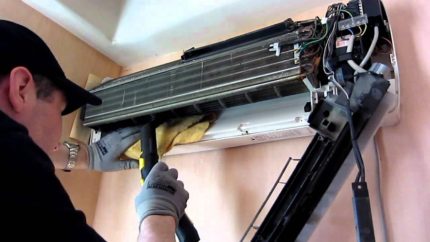
To perform such simple operations, you must have at least a cross and slotted (flat) medium and small size screwdrivers, pliers, wire cutters, a multimeter, a wire for the jumper on your farm. Depending on the model, appropriate wrenches and hexagons may be needed.
Conclusions and useful related videos
The video tells that the cause of the E101 error was the appearance of microcracks on the printed circuit board in the street block:
The video shows the cleaning of the outdoor unit of the air conditioner with its dismantling:
As you can see, thanks to the developed system of diagnostics and indication of malfunctions, it is possible to establish the cause of the failure of the Samsung air conditioner yourself. The first thing to do is disconnect the split system from the mains for 30 seconds to clear errors.
Also, before turning on the device again, it is better to make sure that the outdoor unit is not mechanically damaged. To identify and eliminate more serious malfunctions, you will need to have at hand the decryption of error codes and the necessary tool. And individual errors require a mandatory service call.
Want to talk about your own experience in identifying a failure of your own split system? Do you know the technological nuances that are worth sharing with site visitors? Please write comments in the form below, post pictures and ask questions about the topic of the article.

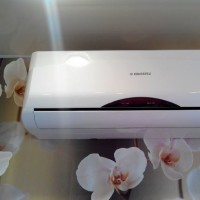 Errors of Kentatsu air conditioners: how to identify a violation by code and carry out repairs
Errors of Kentatsu air conditioners: how to identify a violation by code and carry out repairs 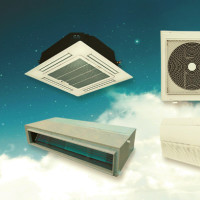 Errors of Vertex conditioners: how to find the violation by the code and correct the situation
Errors of Vertex conditioners: how to find the violation by the code and correct the situation 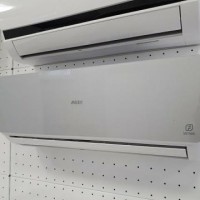 Errors of Aux conditioners: how to identify a malfunction and restore the operation of the split system
Errors of Aux conditioners: how to identify a malfunction and restore the operation of the split system 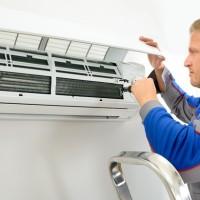 Panasonic Air Conditioner Errors: Troubleshooting by Code and Repair Tips
Panasonic Air Conditioner Errors: Troubleshooting by Code and Repair Tips 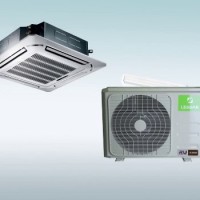 Errors of Lessar air conditioners: identification of breakdowns by code and instruction on troubleshooting
Errors of Lessar air conditioners: identification of breakdowns by code and instruction on troubleshooting 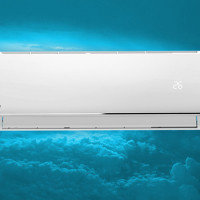 Errors of Beko conditioners: definition of breakdown by code and repair methods
Errors of Beko conditioners: definition of breakdown by code and repair methods  How much does it cost to connect gas to a private house: the price of organizing gas supply
How much does it cost to connect gas to a private house: the price of organizing gas supply  The best washing machines with dryer: model rating and customer tips
The best washing machines with dryer: model rating and customer tips  What is the color temperature of light and the nuances of choosing the temperature of the lamps to suit your needs
What is the color temperature of light and the nuances of choosing the temperature of the lamps to suit your needs  Replacement of a geyser in an apartment: replacement paperwork + basic norms and requirements
Replacement of a geyser in an apartment: replacement paperwork + basic norms and requirements